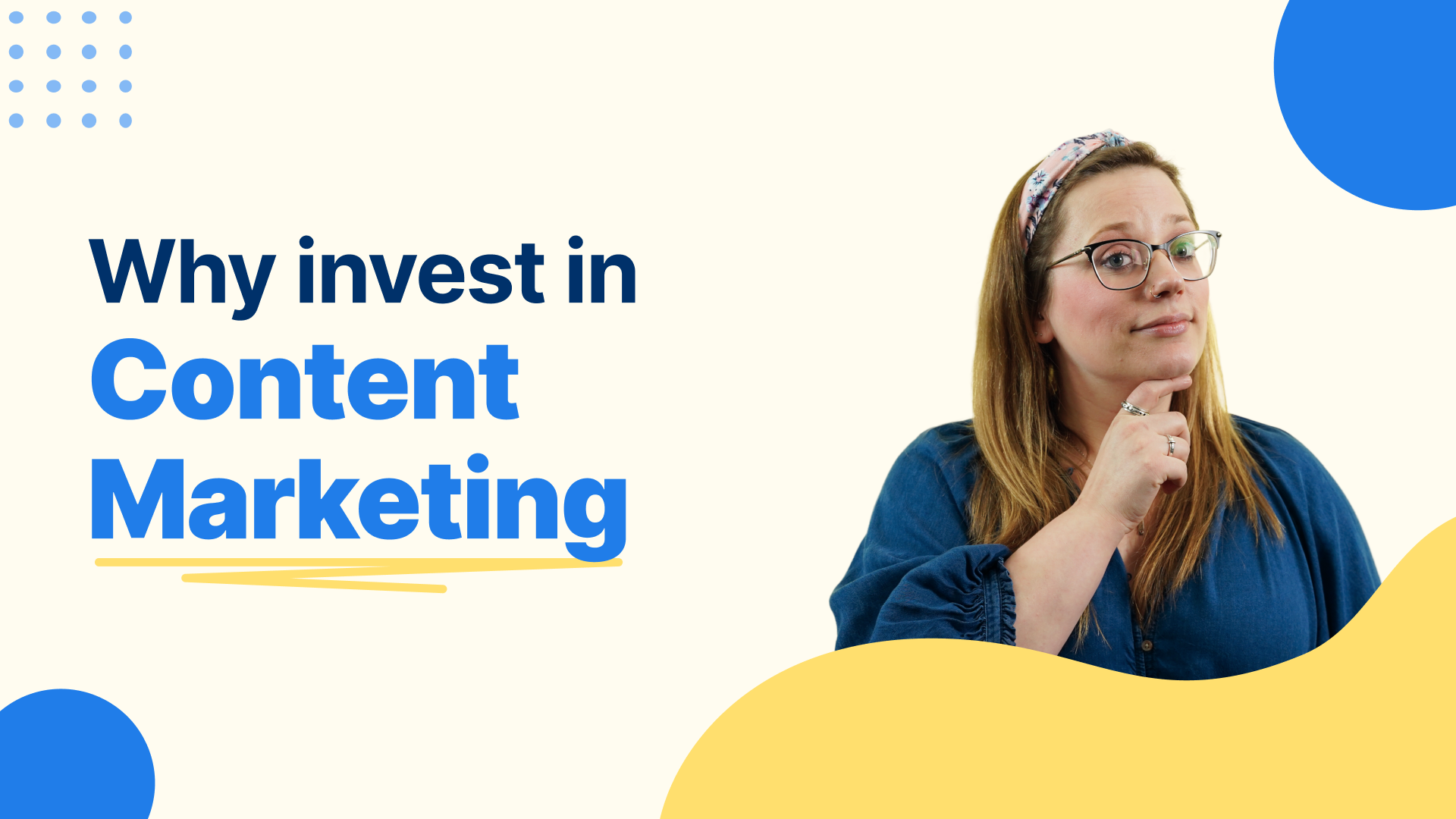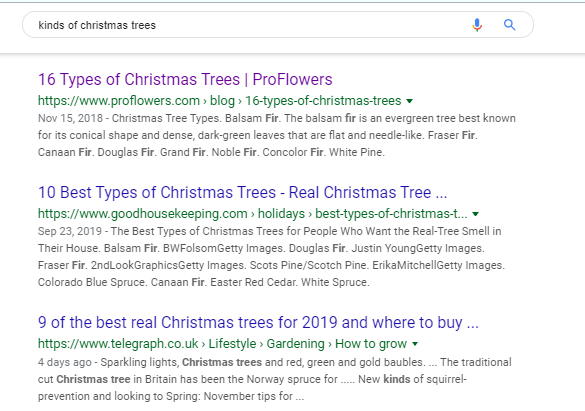-
 Published: Jun 1, 2023
Published: Jun 1, 2023
-
 11 min. read
11 min. read
-
 Macy Storm
Macy Storm Content Marketing Consultant
Content Marketing Consultant
- Macy is a content marketing consultant with over five years of experience creating content for dozens of industries including home services, recreation, and education. She’s written about every marketing topic under the sun, from SEO to AI to email marketing. Her work has been featured by Search Engine Journal, HubSpot, Entrepreneur, Clutch, and more. In her free time, Macy enjoys crafting, reading comic books, and walking her dog Daisy.
What is content marketing?
Content marketing is a digital marketing strategy that involves creating and sharing online content such as blogs, videos, images, graphics, social media posts, and more, to attract and retain customers. Businesses use content marketing to educate their audience about various topics, products, and services, while simultaneously promoting their business.
In this content marketing guide, we’ll discuss the content marketing definition, how content marketing works, and share some tips for creating great content.
- What is content marketing?
- Why is content marketing important?
- What is an example of content marketing?
- Types of content marketing
- How to get started with content marketing?
- 3+ content marketing tips for getting started
Need help creating valuable content that ranks in search results and engages your audience? Consider outsourcing your content marketing to an agency like WebFX!
Contact us online or call us today at 888-601-5359 to learn more about our content marketing plans.
What is content marketing?
Content marketing is the creation and distribution of online material like blog posts, videos, and guides to attract, engage, and educate readers about a topic, product, or business. Distribution methods for content marketing include social media, paid advertising, and search engine optimization (SEO).
Why is content marketing important?
You know the content marketing definition, but what about its benefits? Check out what others have to say about the benefits of content marketing with these content marketing statistics:
- Three times is how much more efficient content marketing is at generating leads than outbound marketing
- 72% of businesses say that content marketing increases leads
- 67% of marketer-respondents say they’ve calculated revenue coming from leads and conversions generated by content marketing
Additional benefits of content marketing include:
- Reach your target audience: Your audience is already searching for information, so why not provide it to them? By creating content, you improve your business’s reach to your target audience and give them the information they need to move through the buying funnel.
- Build brand awareness: When you share valuable information with your audience, they spend time getting familiar with your brand. They’ll get to know your company and your brand, which helps nurture these visitors into leads and eventually clients.
- Increase close rates: With content marketing, you can create a content library for your website visitors, plus for your sales team, which they can share with qualified leads to help close the deal.
Jumpstart your content and discover post ideas with our free content toolkit.
Explore: Is Content Marketing Worth It?
What is an example of content marketing?
Let’s look at content marketing in the wild. When you search “kinds of christmas trees” in a search engine, you’ll be met with some results like this:
The top three results are blog posts from different companies detailing various types of Christmas trees. These pieces of content have a few different goals:
- Educate readers about types of Christmas trees
- Help readers choose the best type of tree for their needs
- Provide readers an option for purchasing the type of tree they want
What’s important to note with this content marketing example is that the content has goals — these sites didn’t write the blog post just to write it. They wrote it because they researched their audience’s needs and knew how to address them.
Types of content marketing
When most people think of content, they only thing of blogging. While blogging is an effective way to produce and share content, many other mediums fall under content marketing, too, like:
- Blogs
- Videos
- Ebooks
- Infographics
- SEO content
- Webinars
- Online guides
- Long-form content
How to get started with content marketing?
🎥Video: How to create a content marketing plan
Learn how to do content marketing with these steps:
- Establish your target audience
- Consider the buyer’s journey
- Brainstorm content topics
- Focus on quality over quantity
- Publish content regularly
- Make your site user-friendly
If you want more help getting started with content marketing, working with the best content marketing companies is a great option.
1. Establish your target audience
Before you start creating content, you need to know who you’re marketing to so you can give your content a sense of direction. That means determining our target audience.
Think about your audience’s attributes — what are their defining characteristics? Look at audience information like
- Demographics
- Socioeconomic status
- Buying habits
- Interests
When you know your audience better, you can create more personalized content for them by addressing topics that appeal to them and providing them with valuable information.
2. Consider the buyer’s journey
You’ll also want to consider the buyer’s journey, or how people go from discovering a product or service to becoming a paying customer.
Here are the three main stages in the buyer’s journey:
- Awareness: A person discovers a problem or need, and starts researching possible solutions.
- Consideration: The person reviews options and narrows them down to one that will best fit their needs.
- Decision: The person chooses the best solution.
When you understand the buyer’s journey, you can develop a more effective content marketing strategy that targets each stage. This way, you can provide content for people at every stage of the journey and increase your chances of attracting leads and deliver content at critical points when your audience needs it most.
3. Brainstorm content topics
Once you’ve identified your target audience and better understood who they are, what they want, etc., you’ll want to start brainstorming different subjects they’d be interested in.
Get ideas by researching what topics people in your industry cover. Come up with a list of key terms related to your business. By brainstorming ideas, you’ll come up with more valuable content ideas you can use to attract new leads.
4. Focus on content quality over quantity
If you want to know how to do content marketing right, start by focusing on your content’s quality.
Now, that’s not to say you shouldn’t post content often, which you should (we’ll dive into that next), but if you’re going to publish content, it needs to be high quality.
Posting 10 low-quality 500-word articles isn’t going to be as effective as three high-quality, informative 1500-word articles.
Users want information that gives them everything they need. Your audience will feel discouraged by your content because if doesn’t provide answers or give enough information to satisfy their needs.
By creating high-quality content, you’ll drive better results with your content marketing strategy. Discover what content marketing services include to better understand how agencies can support your business.
5. Publish content regularly
It’s not enough to create a blog post once every three months and expect success. Content marketing requires regular publishing so you can continually drive traffic to your site and keep up with competitors.
Not to mention, posting content frequently helps people discover your business from different channels.
Help your business publish content frequently by creating a content calendar. A calendar will help you stay organized and know when you’re posting content. This tool also lets you fill any content gaps — or areas where you don’t have content.
6. Make your site user-friendly
If you’re posting content on your website, make sure your site is user-friendly. You can have great content, but if your audience can’t access and interact with it easily, they’ll leave your site and visit a competitor’s website instead.
You can optimize your page by:
- Improving your page speed
- Making your site mobile-friendly
- Use high-quality video content
- Integrate relevant keywords into your content
- Break up text into smaller paragraphs
- Use colors wisely
- Write for humans, not search engines
We foster and form long-term partnerships so that your business has long-term results.
Over 90%
3+ content marketing tips for getting started
🎥Video: Tips to create content that converts
Your content marketing strategy is a powerful way to get leads to find your business and choose you when they’re ready to convert. If you want to drive the right leads, you need a quality content marketing strategy that helps the right people find your business.
Here are some content marketing hacks to help you make content marketing work even better:
1. Write about industry-related topics
The purpose of content marketing is to provide your audience with relevant and informative content. If you want to have a successful content marketing strategy, stick to industry-related topics.
Many businesses try to make content on trending topics because they want to drive traffic to their site. If the issue isn’t related to your industry, it won’t drive the valuable traffic that turns into customers for your business.
So, how do you find industry-related topics to cover?
Keyword research will help you find relevant topics for your content. You can use keyword research tools, like KeywordsFX or Keyword Tool, to find relevant keywords for your page. When you use these keyword research tools, you find a list of relevant keywords, their search volume, their cost per click (CPC) value, and more.
By conducting keyword research, you’ll help your business find industry-related topics you can use for content. It will help you drive more relevant traffic for your business.
2. Promote your content
Content promotion helps you reach more people interested in your business.
Social media is a great place to promote content.
You can share blog posts, videos, and infographics with your audience. They can quickly check out your content and share it on their own social media pages if they like it. For example, Patagonia shares a link to their YouTube channel to show off their newest content.
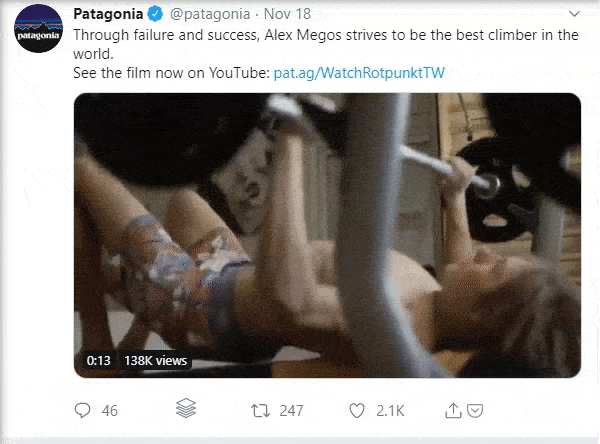
3. Put time into your title tag
When people want content, they’ll often turn to search engines to help them find it. When they look at the search results, users determine which listings are most relevant by looking at the title tag.
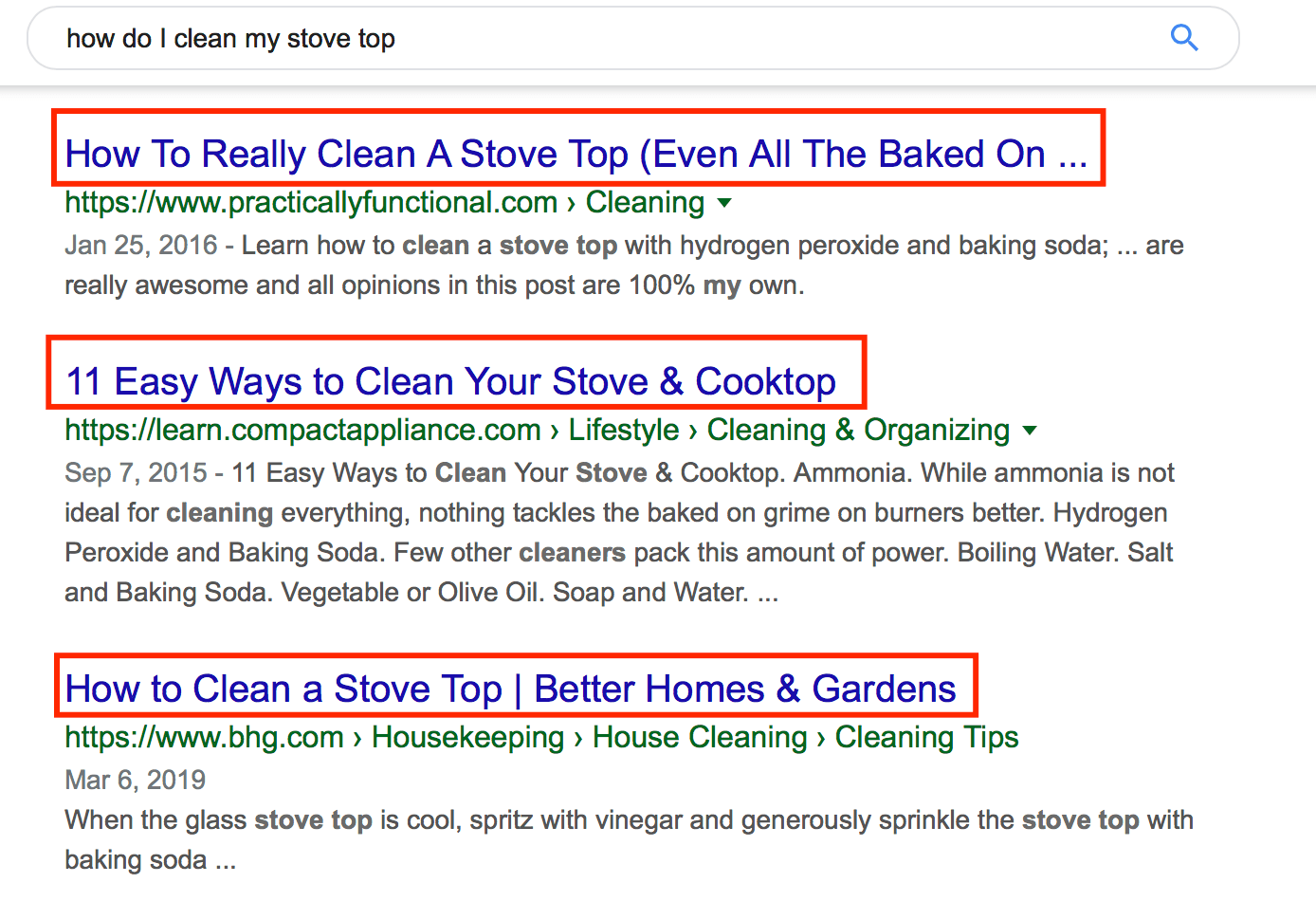 The title tag is the first thing your audience sees when they look in the search results.
The title tag is the first thing your audience sees when they look in the search results.
They will use your title tag to determine page relevancy. You must make a descriptive and informative title tag, so your audience knows what to expect when they click on your article. A good title tag will get users to click on your page and check out your information.
It’s an excellent practice for helping you earn more leads for your business.
4. Create content for every stage of the funnel
When people discover your business, they don’t always convert right away. Most people take time to become familiar with your brand, products, or services and do some research to decide if you’re the best fit. These leads move through a funnel known as the sales funnel.
The sales funnel typically has four stages:
- Awareness
- Consideration
- Evaluation
- Action
As leads get closer to the bottom of the funnel, they’re more likely to convert. So, creating content for every stage of the sales funnel helps you move people through it, turning them from lead to customer.
5. Focus on evergreen content
When you define your content marketing strategy, make sure you’re creating evergreen content.
Evergreen content is content that’s timeless and typically focuses on answering common questions in your industry. Evergreen content is valuable to your business because of its sustainability over time.
In other words, if someone sees it six months after publication, it’s still relevant.
This type of content still may need updating occasionally, but it will maintain its relevance as you update it. Overall, evergreen content will help you have a more sustainable content marketing strategy.
6. Make your content engaging
As mentioned before, Google recognizes pages with longer dwell times, shorter bounce rates, and ideally higher CTR’s.
To make your content more valuable, make it engaging for users.
One unique strategy to do this is to implement marketing gamification on your social media and other formats. Or, add links to other related content, enable comments and shares, and ensure your content is mobile-friendly.
WebFX helps companies like yours reach their business goals
“Our marketing department has a lot of key performance indicators that WebFX has always helped us achieve… WebFX has always worked hard to make sure that we’re getting what we need out of the partnership, not just what may seem like the best result.”
HydroWorx
See Case StudyWant to learn more about how content marketing works?
Content marketing is a valuable tool at your business’s disposal. It’s a great way to help you attract more valuable leads to your page and get them familiar with your brand. If you aren’t sure how to get started with a content marketing strategy, WebFX can help.
With over 500 content marketing-savvy experts on hand, we’ll help you develop a content marketing campaign that works for your business.
Ready to learn more? Contact us online or give us a call at 888-601-5359 to speak with a strategist about our content marketing services!
-
 Macy is a content marketing consultant with over five years of experience creating content for dozens of industries including home services, recreation, and education. She’s written about every marketing topic under the sun, from SEO to AI to email marketing. Her work has been featured by Search Engine Journal, HubSpot, Entrepreneur, Clutch, and more. In her free time, Macy enjoys crafting, reading comic books, and walking her dog Daisy.
Macy is a content marketing consultant with over five years of experience creating content for dozens of industries including home services, recreation, and education. She’s written about every marketing topic under the sun, from SEO to AI to email marketing. Her work has been featured by Search Engine Journal, HubSpot, Entrepreneur, Clutch, and more. In her free time, Macy enjoys crafting, reading comic books, and walking her dog Daisy. -

WebFX is a full-service marketing agency with 1,100+ client reviews and a 4.9-star rating on Clutch! Find out how our expert team and revenue-accelerating tech can drive results for you! Learn more
Try our free Marketing Calculator
Craft a tailored online marketing strategy! Utilize our free Internet marketing calculator for a custom plan based on your location, reach, timeframe, and budget.
Plan Your Marketing Budget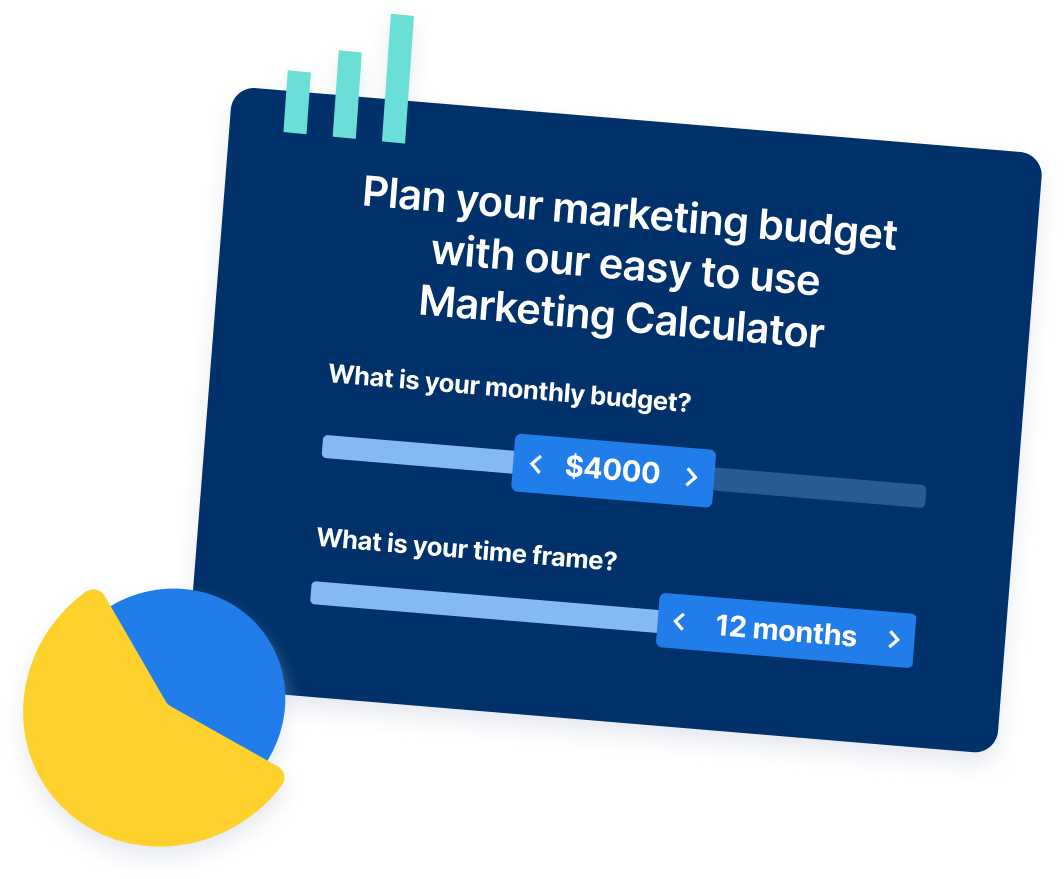

Proven Marketing Strategies

Proven Marketing Strategies
Try our free Marketing Calculator
Craft a tailored online marketing strategy! Utilize our free Internet marketing calculator for a custom plan based on your location, reach, timeframe, and budget.
Plan Your Marketing Budget
What to read next






